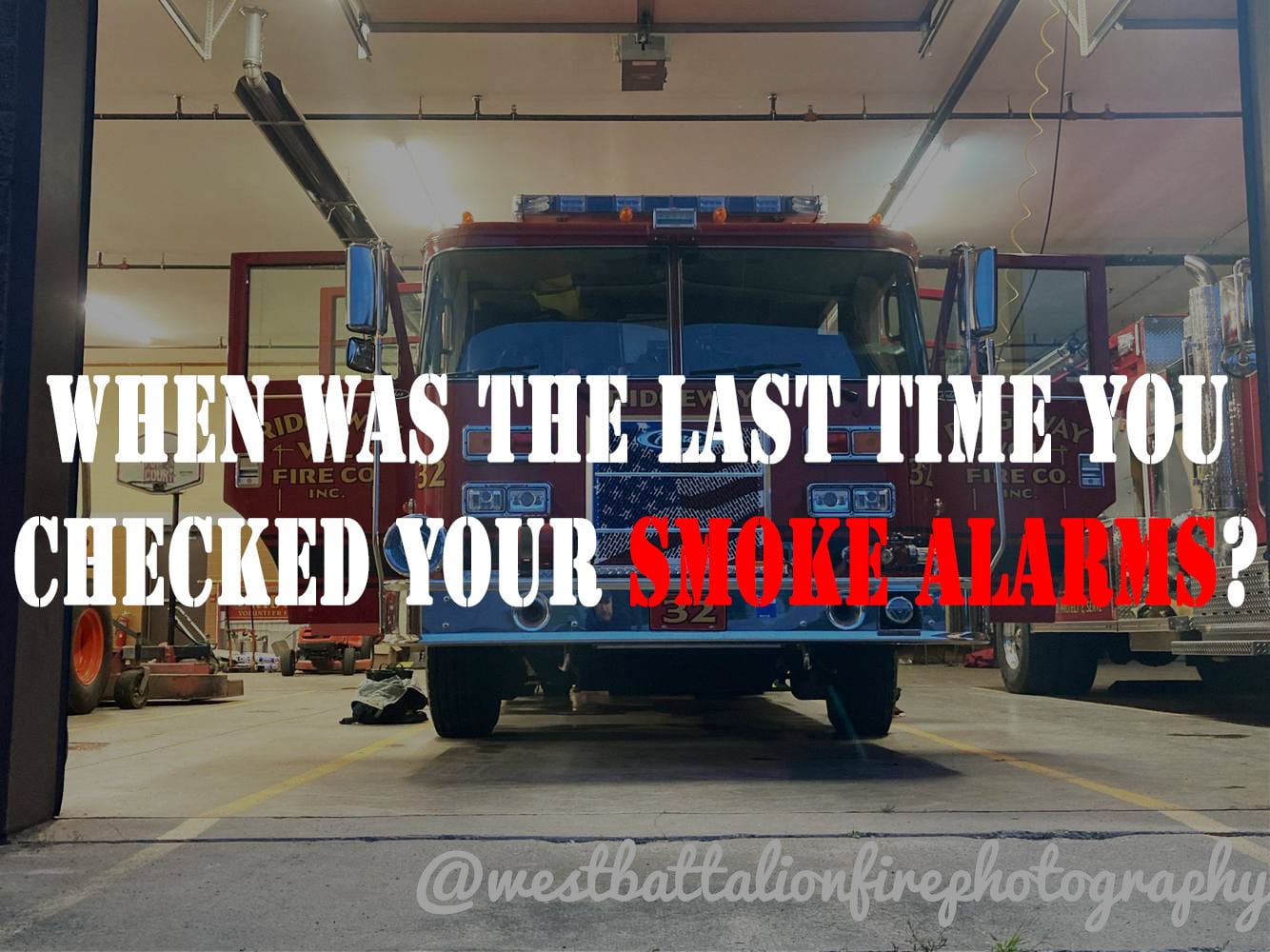Smoke Alarm Maintenance and Testing
What should I know about Smoke Alarms?
The primary thing you should know about smoke alarms is that there are two basic types: Ionization and photoelectric smoke alarms.
Ionization Smoke Alarms are able to quickly detect fast moving fires. Think of a candle catching a curtain on fire- it happens quickly. A Photoelectric Smoke Alarm is quicker in sensing a slower, smoky fire- such as an electrical fire that starts within your walls.
A Dual Sensor Smoke Alarm combines the two types: photoelectric and ionization.
Because there is no way of telling what type of fire may occur in your home, it is strongly recommended by the USFA to have both an ionization smoke alarm and photoelectric alarm- or a dual sensor smoke alarm to detect both types of fires.
For those with hearing disabilities, First Alert also has smoke alarms that utilize flashing strobe lights and vibrations to alert them to danger.
Where should I place my Smoke Alarms?
Minimum coverage for smoke alarms, as recommended by the National Fire Protection Association (NFPA), is one smoke alarm on every level, and in every bedroom.
For CO alarms, the National Fire Protection Association (NFPA) recommends that CO alarms be installed on every level and in the central location outside each bedroom. For added protection, install additional CO alarms in every bedroom.
Specific legal requirements for smoke and CO alarm installation vary from state to state and from region to region. Check with your local Fire Department for current requirements in your area or visit the First Alert state legislation page.
Recommended areas for alarm installation:
- On every level of your home, including finished attics and basements.
- Inside every bedroom, especially if people sleep with the door partly or completely closed.
- In the hall near every sleeping area. If your home has multiple sleeping areas, install a unit in each. If a hall is more than 40 feet (12 meters) long, install a unit at each end.
- At the top of first-to-second floor stairs.
- At the bottom of the basement stairs.
- For additional coverage, install alarms in all rooms, halls, and storage areas, where temperatures normally remain between 40° F and 100° F (4.4° C and 37.8° C).
Alarm installation tips:
- When installing on the wall, the top edge of smoke alarms should be placed between 4 inches (102 mm) and 12 inches (305 mm) from the wall/ceiling line.
- When installing on the ceiling, place the alarm as close to the center as possible.
- In either case, install at least 4 inches (102 mm) from where the wall and ceiling meet.
NOTE: For any location, make sure no door or other obstruction could keep carbon monoxide or smoke from reaching the Alarm.
Where not to install alarms
The following locations should be avoided in smoke or CO alarm installation. These locations may cause nuisance alarms or reduce the performance of your alarm.
- Avoid dusty, dirty or greasy areas:
- garages
- furnace rooms
- crawl spaces
- unfinished attics
- Avoid combustion particles. Combustion particles form when fuel burns. Avoid kitchens, garages, and furnace rooms. Keep units at least 20 feet (6 meters) away from common sources of combustion particles. In small homes, where 20-meter distance is not possible, place the alarm as far away from fuel-burning sources as possible. Keep the area ventilated to prevent unwanted alarms. Here are common sources of combustion particles in the home:
- stoves
- heaters
- furnaces
- water heaters
- space heaters
Install at least 5 feet (1.5 meters) away from any cooking appliance. Air currents can draw cooking smoke into the smoke sensor and cause unwanted alarms. Avoid humid areas. Install your alarm at least 10 feet (3 meters) from common sources of humidity:
-
- shower
- bath
- sauna
- humidifier
- vaporizer or diffuser
- dishwasher
- laundry room
- utility room
Keep alarms out of direct sunlight.
- Avoid turbulent air near ceiling fans or open windows. Blowing air may prevent CO or smoke from reaching the sensors.
- Avoid areas where temperature is colder than 40° F (4.4° C) or hotter than 100° F (37.8° C):
- crawl spaces
- unfinished attics
- uninsulated ceilings
- porches
- garages
- Avoid insect infested areas. Insects can clog the openings to the sensing chamber.
- Install at least 12 in. (305 mm) away from fluorescent lights. The lights can interfere with the sensor.
- Avoid dead air spaces with no air circulation. Dead air spaces may prevent smoke from reaching your alarm. To avoid dead air spaces, follow the installation recommendations below.
- On ceilings, you should install alarms as close to the center of the ceiling as possible. If this is not possible, install the alarm at least 4 inches (102 mm) from the wall or corner. For wall mounting, the top edge of the alarm should be placed between 4 in. (102 mm) and 12 in. (305 mm) from the line where the wall meets the ceiling.
How Do Smoke Alarms Work?
All smoke alarms consist of two basic parts: a sensor to detect the smoke and a very loud electronic horn to alert the surrounding area. Smoke detectors can run off of a 9-volt battery or 120-volt house current. Let’s examine the two most common types of smoke alarms used today: photoelectric detectors and ionization detectors. And, we’ll also take a look inside an ionization detector. We’ll start with photoelectric detectors.
How can I keep my smoke alarms in good working order?
Our alarms are designed to be as maintenance-free as possible, but there are a few things you can do to make sure the alarms run properly every time:
Test your alarms
Your units should be tested once per week, when possible. Regular testing with the “Test” button helps ensure that your alarm has a reliable power source. The test button is usually located on the side or top of your unit. Refer to your user’s manual for full instructions.
Does the “Test” button really test the alarm?
Yes, read more about each alarm type and how the test button works:
- In ionization smoke alarms, the test button puts an electric “load” on the sensing chamber, causing the alarm to react as through there was smoke present. This also tests the battery and the rest of the circuitry and is a very accurate method for testing the sensing chamber.
- In photoelectric smoke alarms, the test button causes a reflective material to go in front of the light emitting eiode (LED), causing light to scatter throughout the sensing chamber similarly to the way smoke particles would. This tests the unit completely, not just the battery.
I’m getting a false alarm from my smoke alarm. Why does my smoke alarm sound when I can’t see smoke?
If you feel like you are getting a false alarm from your smoke alarm (not a low battery chirp) often, please review the following known reasons:
- The cover or sensor chamber is covered by dust or dirt. Alarms may look clean, but dust can accumulate inside the cover, especially in newly built homes. Gently vacuum smoke alarms regularly using the soft brush attachment. Be sure electricians install the provided dust cover to keep alarm clean during construction.
- Power interruptions or loose connections to AC/DC hardwired smoke alarms. Smoke alarms may sound off briefly when power is interrupted, then restored. Power interruptions are common in areas where utility companies switch grids in the early hours of the morning.
- When the furnace is turned on for first use or the alarm is too close to the furnace.
- Humidity – Ionization smoke alarms are more susceptible to nuisance alarms when placed near a bathroom or other potentially high humidity areas.
- Cooking – According to a survey performed by First Alert, nearly 7 out of 10 Americans have had a smoke detector alarm because of smoke from cooking.
- Smoke Alarm May Need to be Relocated – If possible, install smoke alarms at least 20 feet from appliances like furnaces and ovens, which produce combustion particles. Alarms should be at least 10 feet from high humidity areas like showers and laundry rooms, and at least 3 feet from heat/AC vents and fluorescent lights whenever possible. In areas where a 20-foot (6 meter) distance is not possible – in modular, mobile, or smaller homes, for example; it is recommended the Smoke Alarm be placed as far from these fuel-burning sources as possible. The placement recommendations are intended to keep these Alarms at a reasonable distance from a fuel-burning source, and thus reduce false alarms.
My smoke alarm keeps chirping and beeping. Why does my smoke alarm chirp intermittently?
It is likely that the reason your smoke alarm keeps chirping and beeping is that the battery is low. Whenever your smoke alarm keeps chirping, replace the battery immediately.
- A different device or appliance such as a security system, monitor, carbon monoxide alarm, or other device which has a similar low battery or alert signal.
- Some of the same factors that cause unwanted alarms can cause intermittent alarms: dust and insects in the alarm or power interruptions in hardwired alarms.
- Improper wiring on AC or AC/DC smoke alarms. AC alarms will chirp every 5 seconds if the interconnect wire is grounded. The orange interconnect wire should NEVER be grounded; it should only be used to interconnect other smoke alarms or compatible devices.
Why doesn’t my smoke alarm sound when I push the test button?
It is important that you frequently test your smoke alarms. When you are testing your smoke alarm, there are a number of reasons why the alarm might not sound:
- You may not be holding the test button down long enough. Try holding it down for up to 10 seconds (20 seconds on photoelectric models).
- Your battery may not be installed properly or snapped all the way in place. Even if the alarm sounded briefly when the battery touched the terminals, you still need to make sure it is snapped securely in place. If the battery is loose, in cannot power the smoke alarm properly. After installing new batteries, be sure to test your smoke detector.
- Your AC power may not be on. AC and AC/DC units will have a power indicator light (red or green) that shines continuously when they are receiving electrical power.
- If you have a 10-Year model, the smoke alarm may not have been properly activated. If the tab broke away before the alarm was activated, you can use a toothpick to move the switch over to test the alarm.
Why does my smoke alarm go off when I install a battery or turn on the AC power?
It is normal for smoke alarms to go off and sound briefly (up to 5-10 seconds) when you install a new battery or when they are powered up. If the alarm continues to go off and no smoke is present, the cause may be one of the following:
- There may be insufficient battery power, try new batteries.
- Problems with voltage or insufficient electrical power (brown out) may cause a continuous weak sounding alarm. For AC or AC/DC models, temporarily disconnect power at the service panel until the brown out is over. If you do not restore the AC power, your smoke alarms cannot warn you of a fire.
- Incompatible warning device. If an incompatible alarm or auxiliary device is linked into a series of AC or AC/DC smoke alarms it may cause the system inadvertently go off.
My smoke alarm keeps chirping, even with a new battery. What is causing this?
There are a number of possible causes for your smoke alarm to keep chirping even with a new battery.
- It is possible that your smoke alarm “silence” button was pushed by mistake. The alarm will now “chirp” once a minute for up to 15 minutes before resetting.
- Are you sure it’s the smoke alarm? Funny to ask, but other devices have similar low battery chirps or warning tones.
- Your “new” batteries may not be fresh. If batteries are stored, especially in cold areas like refrigerators, they quickly lose their charge. Always check the freshness date on the package when buying new batteries. Keep plenty of replacement batteries on hand so that you are sure to always be protected by your smoke alarms.
I’m ready to change my smoke alarm battery – what replacement batteries can I use?
Check your User’s Manual or the nameplate on the back of the alarm. Different smoke detectors use different kinds of batteries – 9V, AA, AAA – it all depends on the particular model you have. Use quality batteries like lithium smoke detector batteries – having plenty of power is worth any extra cost. Never use rechargeable batteries because they may not always provide a consistent charge.
Source: http://home.howstuffworks.com/smoke.htm https://www.firstalertstore.com/store/categories/Smoke_alarms_faq.htm





